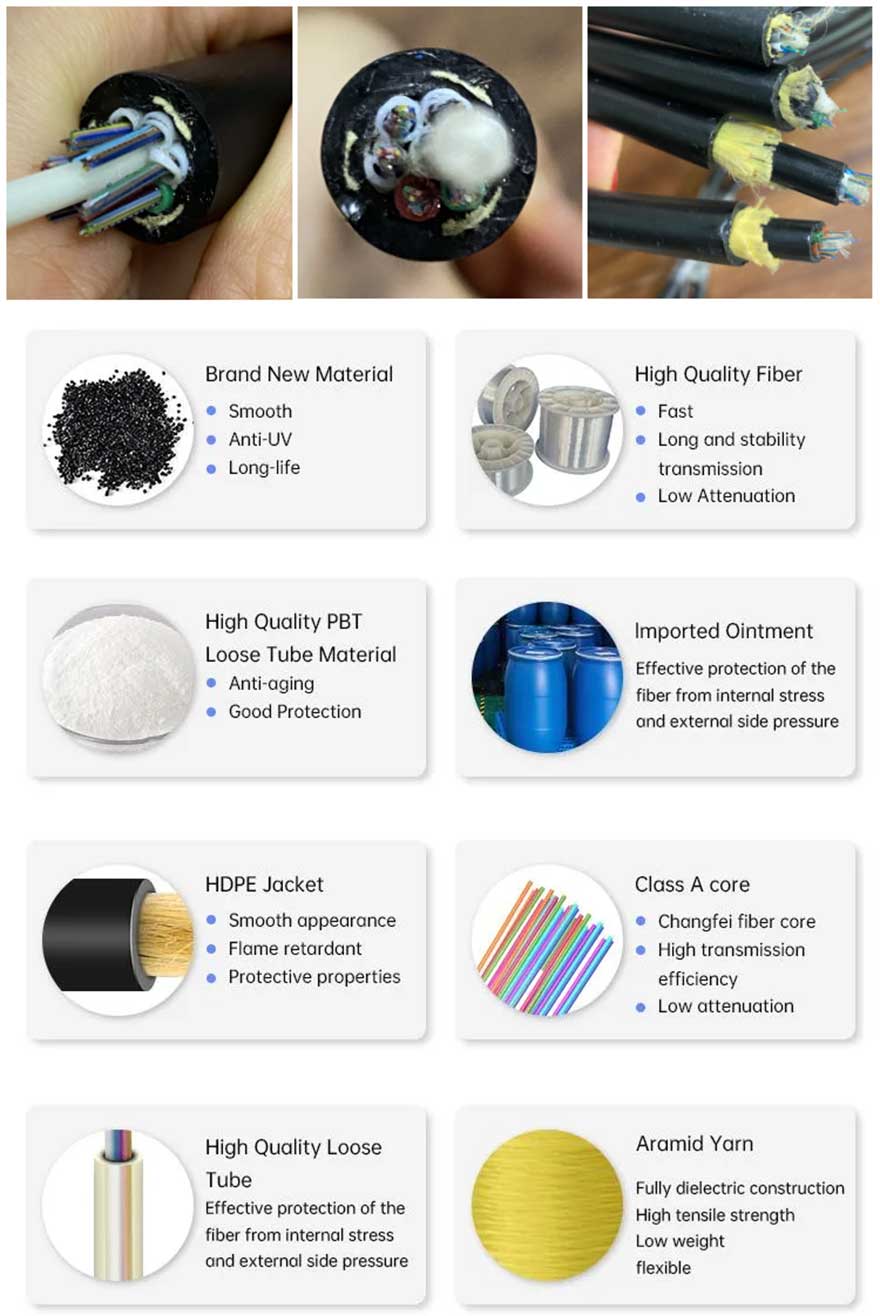The use of fiber optic cable in telecommunications has become increasingly popular over the years, and with good reason. Fiber optic cable offers many benefits, including faster data transfer rates, greater bandwidth, and improved reliability compared to traditional copper cable. However, not all fiber optic cables are created equal. In this article, we will take a closer look at ADSS fiber cable and compare it to other types of fiber optic cable.
First, let's define ADSS fiber cable. ADSS stands for "all-dielectric self-supporting." This type of fiber optic cable is designed to be installed without the need for additional support structures such as poles or towers. Instead, ADSS fiber cable is suspended from existing power lines or utility poles, making it an ideal choice for long-distance telecommunications applications.
Now, let's compare ADSS fiber cable to other types of fiber optic cable. One common type of fiber optic cable is called loose tube cable. This type of cable consists of multiple fibers housed in protective tubes. Loose tube cable is often used in outdoor applications where protection from the elements is important. However, loose tube cable can be more difficult to install than ADSS fiber cable since it requires additional support structures.
Another type of fiber optic cable is called tight buffer cable. This type of cable features a protective coating around each individual fiber, making it more rugged and durable than loose tube cable. Tight buffer cable is often used in indoor applications such as data centers or office buildings.
So, why choose ADSS fiber cable over other types of fiber optic cable? One advantage is that ADSS fiber cable can be installed quickly and easily without the need for additional support structures. This makes it a cost-effective solution for long-distance telecommunications applications. Additionally, ADSS fiber cable is designed to be resistant to environmental factors such as wind, ice, and lightning strikes, making it a reliable choice for outdoor installations.
In conclusion, ADSS fiber cable offers several advantages over other types of fiber optic cable, including ease of installation and reliability in harsh outdoor environments. As the demand for high-speed telecommunications continues to grow, ADSS fiber cable will likely become an increasingly popular choice for network operators around the world.


